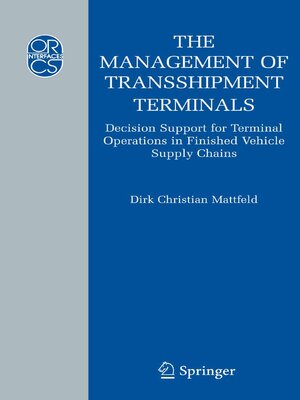The Management of Transshipment Terminals
ebook ∣ Decision Support for Terminal Operations in Finished Vehicle Supply Chains · Operations Research/Computer Science Interfaces Series
By Dirk C. Mattfeld

Sign up to save your library
With an OverDrive account, you can save your favorite libraries for at-a-glance information about availability. Find out more about OverDrive accounts.
Find this title in Libby, the library reading app by OverDrive.



Search for a digital library with this title
Title found at these libraries:
| Library Name | Distance |
|---|---|
| Loading... |
1.1 Freight Transshipment We observe an ongoing trend towards globalized industrial produc tion. Multinational companies aim at strategic competitive advantages by distributing their activities around the globe. As a result, the in dividual supply chains become longer and more complex. Next to the supply chain reliability, companies try to keep supply chains cost effi cient and responsive, i.e. warrant short order fulfillment lead times (Siirie and Wagner, 2005). The above goals dictate low inventory levels at the stages of a supply chain as well as a high frequency of transports between the partners involved. Supply Chain Requirements. Detailed performance measures for a supply chain are provided by the Supply Chain Operations Refer ence (SCOR) model (Supply-Chain Council, 2002). The SCOR model provides four levels with increasing detail of process modeling. In accor dance to the process detail depicted SCOR metrics are defined for each level. Level 1 distinguishes metrics addressing the reliability of supply chains, their responsiveness, flexibility, cost and optionally their assets. On levels 2-4 these metrics are operationalized with respect to the pro cess types source, make and deliver. Thus, as substantial activities of the deliver process, transport and transshipment are evaluated as an integral part of the supply chain.







